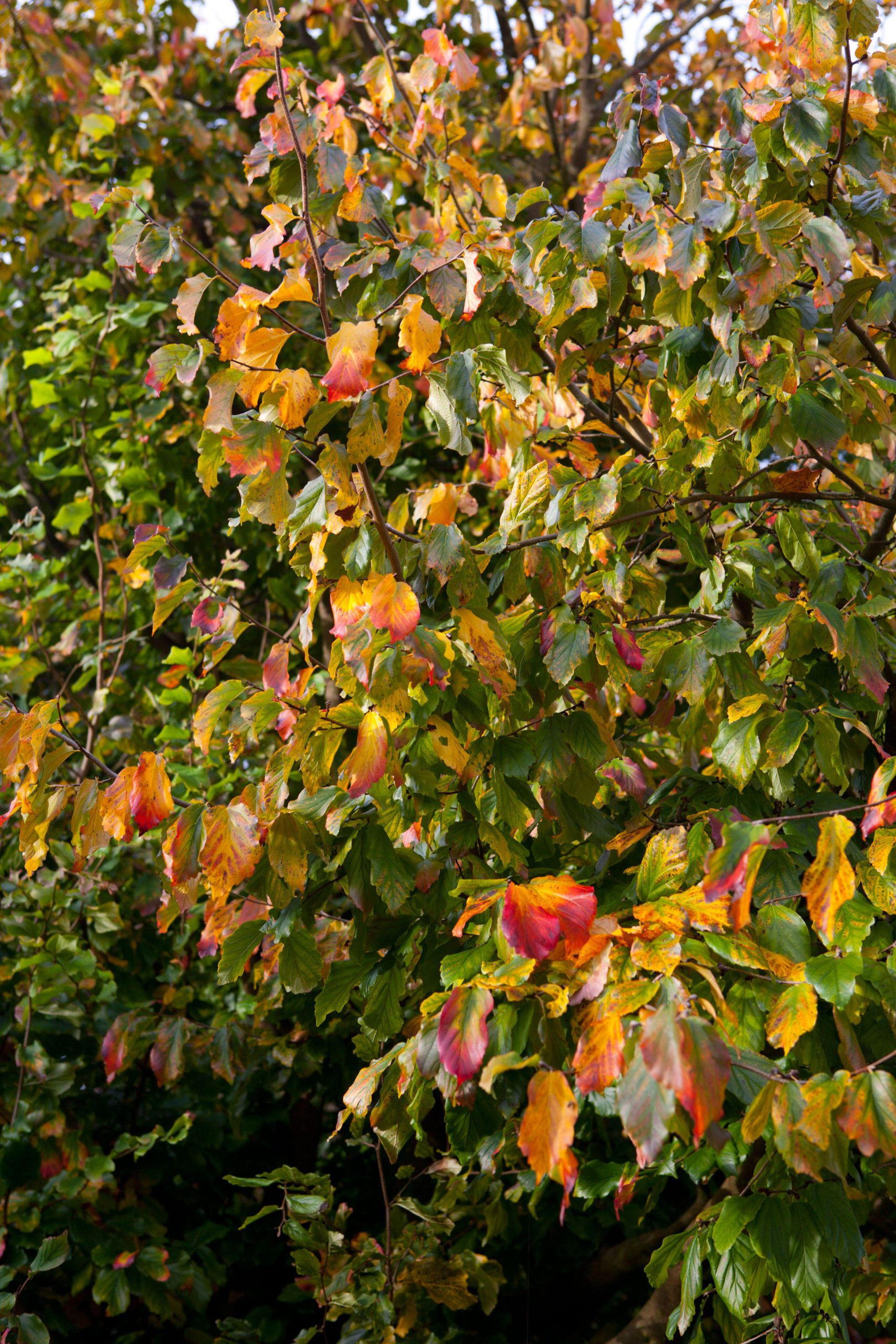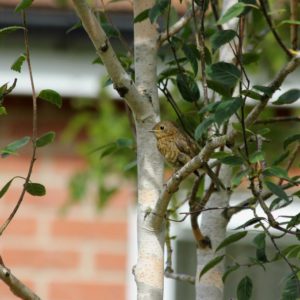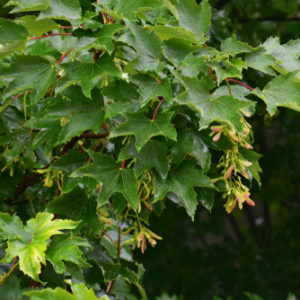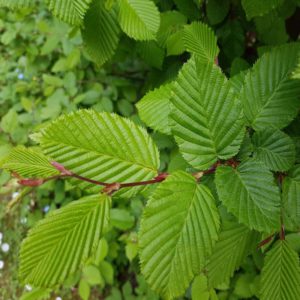Parrotia persica ‘Vanessa’
Price range: €350.00 through €450.00
Frequently Bought Together
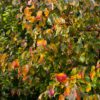

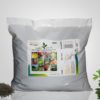

Description
Quick Facts
- Common Name: Vanessa Persian Ironwood, Columnar Persian Ironwood
- Botanical Name: Parrotia persica ‘Vanessa’
- Plant Type: Deciduous tree
- Mature Height: 8-10m
- Mature Spread: 3-4m
- Flowering Period: February to March
- Flower Colour: Red spidery flowers
- Foliage: Oval leaves, glossy green turning brilliant yellow, orange, and red in autumn
- Hardiness: RHS H6 (hardy)
- Soil Requirements: Moist, well-drained, slightly acidic to neutral
- Aspect: Full sun to partial shade
- Maintenance: Low
Description
Experience the exceptional beauty of Parrotia persica ‘Vanessa’, a remarkable columnar form of the celebrated Persian Ironwood that brings spectacular multi-season interest to Irish gardens where space is at a premium. This outstanding cultivar offers all the ornamental qualities of its parent species—extraordinary autumn colour, intriguing winter flowers, and beautiful flaking bark—all contained within a distinctly upright, columnar form that makes this perfect for narrow spaces, formal designs, and contemporary landscapes where traditional spreading trees would be impractical.
Throughout spring and summer, this captivating tree displays its attractive oval leaves of glossy dark green that create a dense, narrow column of foliage, providing elegant vertical accent without overwhelming neighbouring plants. In late winter, before the leaves emerge, clusters of curious spidery red flowers with prominent stamens appear along bare branches, creating unexpected colour when the garden needs it most. As autumn arrives, the true magic unfolds—the entire canopy transforms into one of the most spectacular displays in the plant kingdom, with leaves turning brilliant shades of yellow, orange, scarlet, and deep burgundy-red, often with multiple colours on a single leaf. The smooth grey bark gradually flakes away to reveal patches of green, cream, and pink beneath, creating stunning winter interest reminiscent of a living tapestry.
Named after the German botanist F.W. Parrot who explored Persia (modern-day Iran), this species has been treasured for centuries. The ‘Vanessa’ cultivar was selected for its distinctive upright habit, making this ancient beauty accessible to modern gardens with limited space. Exceptionally hardy and adaptable, ‘Vanessa’ thrives in Irish conditions, tolerating urban pollution and a range of soil types whilst delivering reliable spectacular autumn colour that rivals any Japanese maple.
Create stunning compositions by planting in narrow spaces alongside driveways, boundaries, or buildings where its slender profile maximizes vertical impact. Magnificent as sentinel trees flanking entrances, in formal avenue plantings for architectural emphasis, or in rows to create striking screens. Works beautifully in contemporary urban gardens, courtyard settings, or combined with other four-season interest plants like Amelanchier, Cornus, and evergreen grasses for year-round layered beauty.
Caragh Garden Notebook
Planting: Space trees 3-4m apart for avenue or screen plantings, or allow 4-5m for specimen placement. Plant bare-root trees from November to March, or container-grown specimens year-round. Dig holes twice the width of the root ball and incorporate ericaceous compost or well-rotted leaf mould. Plant at the same depth as the nursery soil mark. Stake for the first 2-3 years using a single vertical stake. Water thoroughly and mulch with acidic organic matter.
Soil Preparation: Thrives in moist, well-drained soil with pH 5.5-6.5 (slightly acidic to neutral). Prefers moisture-retentive conditions enriched with organic matter. Tolerates heavier clay soils if drainage is adequate. Avoid very alkaline or chalky soils which can cause chlorosis and reduce autumn colour intensity. Incorporate ericaceous compost or well-rotted leaf mould to improve soil structure and maintain acidity. Best autumn colour develops in full sun with adequate moisture.
Container Growing: Suitable for large containers (minimum 60-80cm diameter) for several years using ericaceous compost. Water regularly, especially during growing season. Feed in spring with slow-release ericaceous fertiliser. Eventually benefits from planting out for long-term health and to achieve full height potential, spectacular autumn colour, and distinctive bark development.
Seasonal Care: Requires minimal pruning—the naturally columnar habit maintains itself without intervention. Simply remove any dead or damaged branches in late winter or early spring. Remove any branches that break the columnar outline if desired, though this is rarely necessary. Avoid heavy pruning as this can spoil the natural form. Apply slow-release ericaceous fertiliser in early spring. Mulch annually with acidic organic matter to retain moisture and maintain soil pH. Water during prolonged dry spells, especially in the first 2-3 years and during dry autumns when adequate moisture enhances colour development.
Propagation: Propagate by grafting onto Parrotia persica rootstock in late winter (specialist technique). Layering is possible but slow. Seed-grown plants will not come true to type and will not maintain the distinctive columnar form. Most gardeners prefer to purchase nursery-grown grafted specimens for guaranteed quality, true-to-type characteristics, and reliable upright habit.
This architectural gem combines space-saving columnar form with absolutely world-class autumn colour—those multi-toned leaves in yellow, orange, and scarlet are simply breathtaking! Plus you get winter flowers and that gorgeous flaking bark for year-round interest. Perfect for modern gardens where every square metre counts but you refuse to compromise on beauty!

